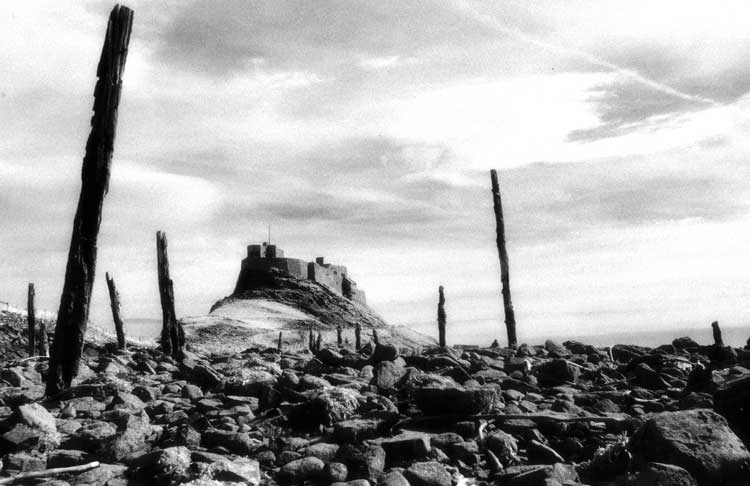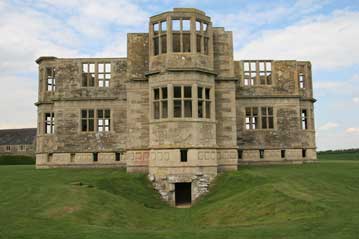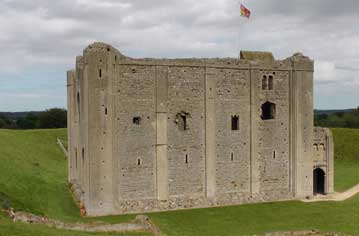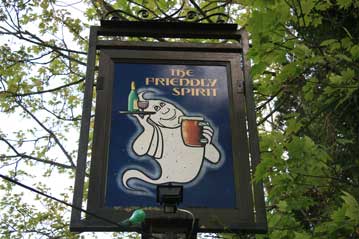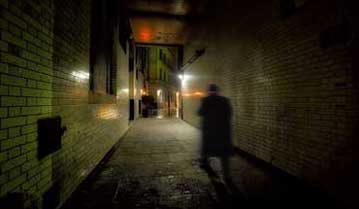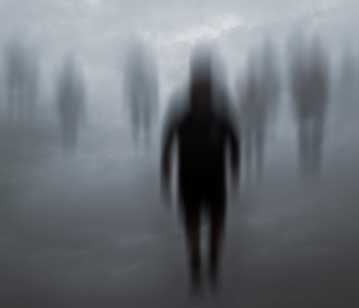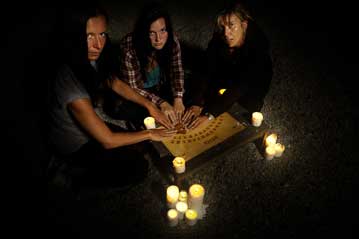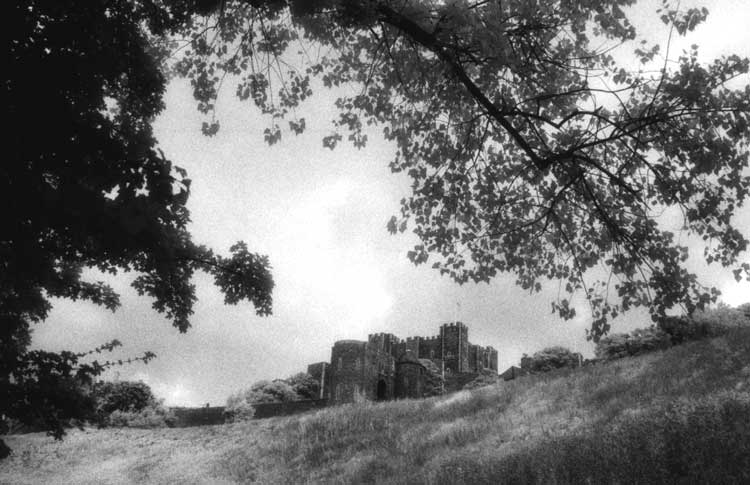
The Haunted Realm
The ghosts of Haunted England are a rich and varied bunch, and they appear in a wide range of different locations across a landscape that is truly diverse and awe-inspiring, and on which a eventful past has left its mark.
From the sea-sprayed cliffs of Cornwall, to the bleak sedges of Dartmoor; across the rich and fertile fields of the Midlands; through the industrial landscapes of Lancashire; over the rolling pastures of Yorkshire and into the wild and rugged scenery in the extreme north of the country - Haunted England is a joy to explore and discover.
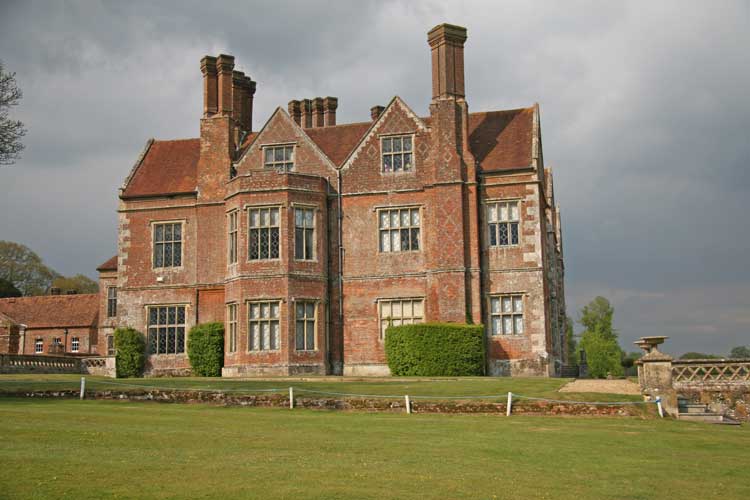
The Mysterious West
A fantastical aura of mystery and magic hangs heavy over England’s West Country.
From the sea-sprayed cliffs of Land’s End, beyond the tumbling granite of which, tradition says, once stretched the lost kingdom of Lyonesse, and on through the timeless villages of the eerily beautiful Cornish countryside - where the spirit of Arthur, that most legendary of British Kings, bestrides a landscape of ruined castles, ancient hill forts and dark, enchanted pools, you just know that this is a magical and haunting part of England.
Moving across this mystery-steeped landscape you arrive in Devon and encounter the wild wilderness of Dartmoor, with its sinister tales of hellish hounds, evil squires and haunted ruins.
Devon also boasts tranquil countryside and a wealth of pretty villages, as does the rolling, green pastures of Somerset, where the Holy Grail is reputedly buried and where - on the fabled Isle of Avalon - King Arthur is said to rest.
Add to all this an abundance of brooding stone circles and prehistoric remnants, and you have a potent brew of tangible history around which myth and legend have woven of tapestry of awe and wonder that remains as vibrant and vivid today, as ever it was in the past.
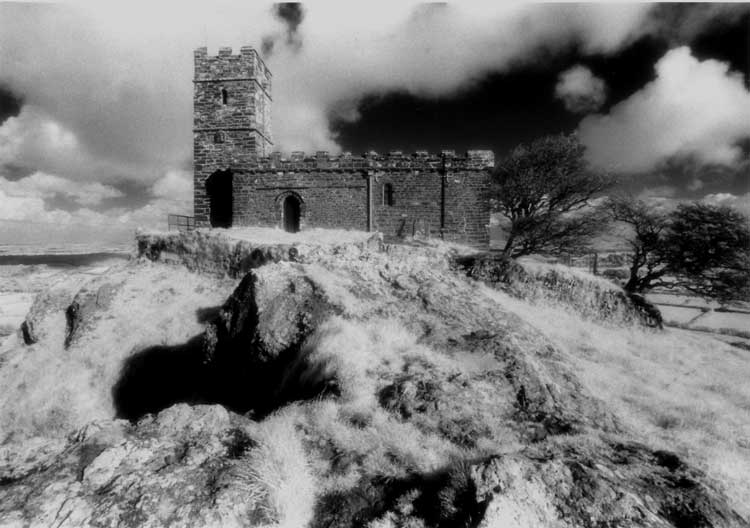
Temples To Forgotten Gods
Leaving the mysterious west of Haunted England behind, you arrive in the counties of Dorset, Wiltshire and Hampshire.
Dominated by the vast chalk-lands of Salisbury Plain, these three counties once formed the core of the Saxon Kingdom of Wessex, from which emerged a King, whose bravery and vision would so transform his land, that history would simply remember him as, "the Great."
His name was Alfred and it was under his inspired leadership that, a little over 1100 years ago, England was born.
But, long before Alfred battled against his Danish foe, another people had cast their mysterious shadow across the landscape, and the relics they left behind still baffle and amaze us today, some three to four thousand years later.
They carved strange figures and white horses into the chalk hillsides.
They threw up earthworks - such as those at Silbury and Cley Hill - that were so impossibly massive, that later generations would come to see them as the work of the devil. Their burial mounds still pepper the landscape.
But, most marvellous of all, were the two great stone temples that they left at Avebury and Stonehenge.
The landscape of this part of Haunted England may lack the drama of the rugged coasts and wild moors of the West Country, but it boasts more prehistoric monuments than any other area, of a comparable size, in Europe and it's magic draws visitors from all over the world.
Indeed, not only was this area the cradle of the English Nation, but it was also a place where man worshipped at the dawn of time, to which several of those to whom this landscape was home in the past still return in spirit form as ghosts.
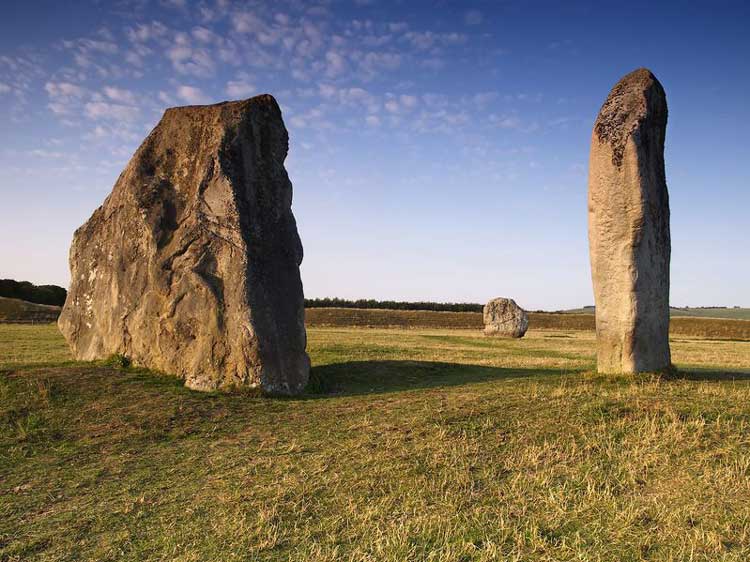
A Troubled Region
Exploring the counties of Gloucestershire, Herefordshire, Worcestershire, Warwickshire and Oxfordshire, it is easy to fall under the spell of their lush pastures and dreamy country lanes. But. this is a tranquil region, steeped in contradictions.
Wandering the quiet Warwickshire byways along which Shakespeare once traipsed, or meandering amongst the gentle hills of the Cotswold's, it is almost impossible to believe that this is a battle scarred landscape where have occurred so many momentous events of national importance, that it has long been known as "England’s cockpit."
Here Charles 1st established his headquarters in the dark days of the civil war.
Through here the Saxons drove the native Britons into the brooding mountains beyond the border with Wales, and began a struggle for mastery of southern England that would last for 600 years.
Here an ancient people stamped their imprint upon the countryside, leaving behind them mysterious hill figures, burial chambers and imposing fortresses.
All this has, in turn, left an ethereal mark upon the landscape, and there are numerous accounts of ghostly Cavaliers and Roundhead’s still battling on, long after the conflict was settled once and for all with the beheading of Charles 1st in 1649.
Today, the roar of battle, has given way to the increasingly noisy hum of the car, and the tramping of troops to the steady plod of thousands of ramblers who trudge eagerly across the blood drenched turf, enjoying the fresh country air of some of England’s most beautiful and tranquil countryside.
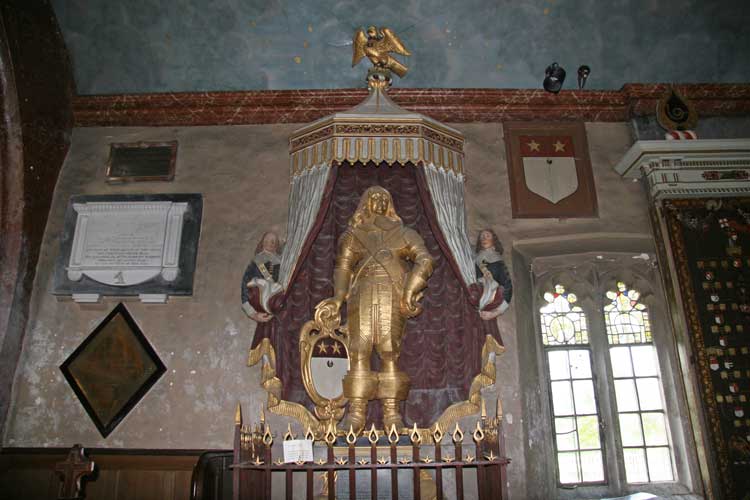
Home County Terrors
Although the Home Counties and London offer a limited number of castle ghosts, the intrepid seeker of ghosts and phantoms will not be left wanting in this region of Haunted England. Indeed it is home to the most haunted castle in Britain - The Tower of London, which is a spectral township in its own right.
The names of those who have passed through Traitors Gate, to be thereafter lost to the world, read like a who’s who of English History, and the ghosts that haunt this dark, imposing fortress offer a veritable hierarchy of the spirit world.
London, as a whole, enjoys the reputation of being the most haunted Capital city in the world with ghosts that span the centuries and provide numerous glimpses of a dark and sinister past.
It has also long been a magnet to ambitious youths who, like Dick Whittington, have come in search of its mythical gold paved streets.
On the other hand it has attracted the dishonest and the infamous, such as Dick Turpin and Jack the Ripper whose legends have become an integral part of the capital’s rich folklore.
To the west of London, Windsor Castle - the Queens favourite abode - is the largest and oldest inhabited castle in Europe, and has acquired a phantom population to match it lofty heights and venerable antiquity.
To the city’s north and west stretch the counties of Hertfordshire, Bedfordshire, Berkshire and Buckinghamshire, all of which possess rich veins of legend and haunted locations.
Satan and his devilish cohorts appear to have been particularly active here, and several peculiarities across the landscape have long been attributed to him.
On the other hand, religious fervour has been strong in the region and the likes of John Bunyan are indelibly linked with the area.
Add to all this the nefarious activities of the notorious hell-fire club, and the mythical escapades of Herne the Hunter, and you have a rich and varied mix of legend and lore that sit comfortably amidst a tranquil and, sometimes mysterious landscape.
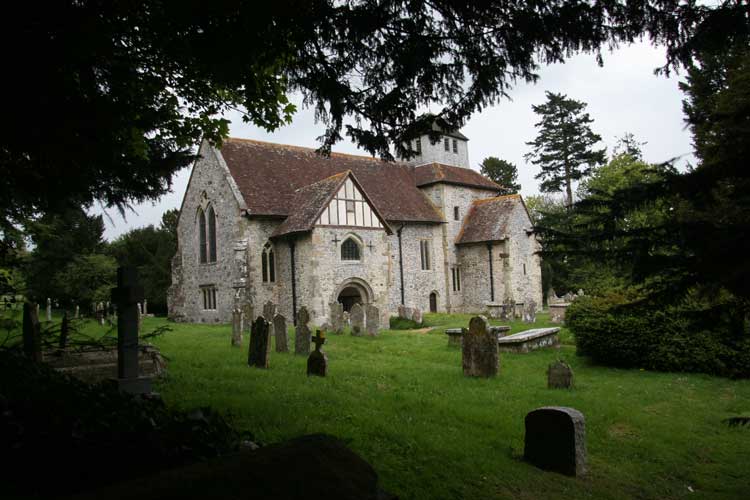
Spectral Inhabitants
The Counties of Kent, Surrey, East and West Sussex are rich in history, lore and legend.
The coastal areas have long provided a gateway through which invaders have passed determined on conquest.
Romans, Saxons and Jutes plodded their way into Britain via this route and, in 1066, William of Normandy led the last successful invasion of England through the Sussex surf and onto the green turf of Telham Hill, where he defeated King Harold at the Battle of Hastings.
A century and a half later, on a tranquil meadow in Surrey, King John would seal Magna Carta and lay one of the most important foundations of English law.
But these momentous events would also be enshrined in legend.
Ghostly soldiers would become a firm ethereal fixture of the landscape, and, such was the universal hatred of King John that, for years after his death, his spirit was said to roam the Surrey countryside in the shape of a monstrous werewolf!
Centuries later, the despotic actions of Henry V111 would make a sizable contribution to the spectral populace, with three of his wives returning to haunt Hampton Court Palace.
In the mid years of the 20th century, a tiny Kentish village called Pluckley would achieve universal fame, as the most haunted village in England.

The Witch Counties
There is little doubt that the counties of Essex, Suffolk, Norfolk and Cambridgeshire are rich in legend, and it is little wonder that into the rich brew of folklore with which the area is imbued, should be mixed the wonderful tales of Borley Rectory, which was, reputedly, once the most haunted house in England.
It is a sad fact of history that, during the witchcraft hysteria of the 16th and 17th centuries, more people were executed in the Counties that comprise the old Kingdom of East Anglia than in any other part of the country.
This was partly as a result of the Puritan stranglehold on the district, which had outlawed holy water and abolished exorcism, leaving the god-fearing people of the area defenceless against the Devil and sundry other evil spirits that they still believed in.
To them witches were a genuine threat, and thus anyone who was slightly different, or even a little eccentric, was likely to find themselves accused of all manner of unspeakable evil and hanged before a baying crowd.
But there were other reasons behind the mania, for this was area where superstitions were rooted in a long ago past.
Danish invaders had brought with them tales of Odin and his wild hunt and of Black dogs that wandered the empty landscape, their jaws dripping with fire.
In this rich countryside with its enormous sky-scapes, these legends evolved into Black Shuck the phantom hound.
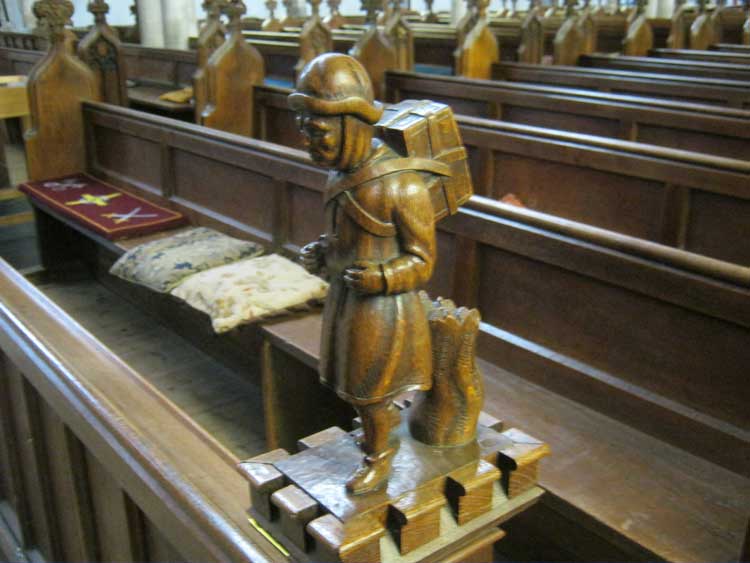
The Demonic Heartlands
The counties that stretch from the Lincolnshire coast to the flat and arable pastures of the East and West Midlands are steeped in some of the best-known legends of English history.
Who cannot wander the byways of Nottinghamshire without giving a thought to the world’s most famous outlaw - Robin Hood?
Who cannot gaze upon the melancholic expanse of Bosworth Field without conjuring up vivid images of the hunch backed figure of Richard 111, shuffling his way through a winter of discontent, desperate to exchange his Kingdom for a life saving mount?
Witchcraft, and its perceived effects, are much in evidence across the landscape, and a tomb in the pretty parish church at Bottesford, Leicestershire, even tells of two boys being killed by "wicked practice and sorcerye."
Further south, Northamptonshire is indelibly linked with the fate of Mary, Queen of Scots - whose beheading at the long demolished Fotheringay Castle, launched what is, arguably, the busiest ghost in Britain upon the spectral landscape.
Elsewhere, the soaring red brick tower of Tattershall Castle stands as a proud testimony to political ambition, and Charles Dickens made his own unique contribution to the folklore of haunted England, when he chanced upon the ghost of one of his own characters at Rockingham Castle!
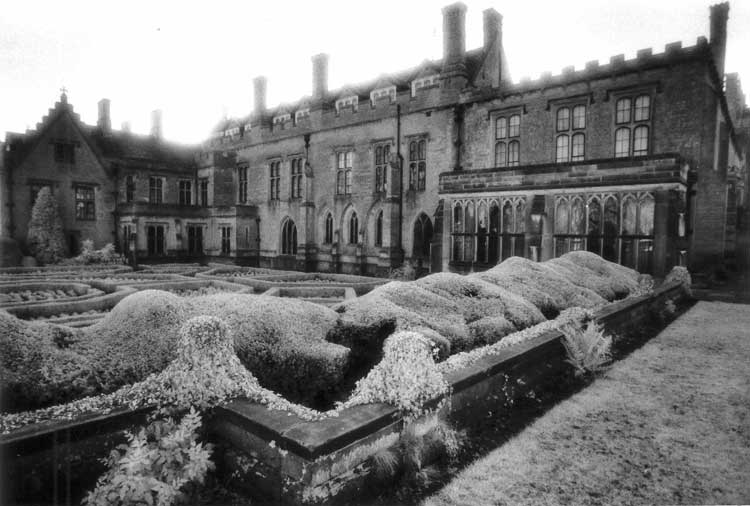
Windswept Moors And Gentle Valleys
The counties of Staffordshire, Cheshire, Derbyshire and Shropshire offer an intriguing contrast of beautiful scenery and industrial landscapes.
The coal, iron and other mineral deposits that were mined here, helped fuel the expansion of the British Empire and have left visible scars all across the regions.
Many of the chimneys and kilns that once pumped pollutants into the atmosphere are today silent.
Yet, they possess an aura of mystery and detachment that is vaguely reminiscent of that found at some of Britain’s more ancient monuments.
Within this industrial heartland, however, one also finds the awesome beauty of the Peak District, where rocky crags, rise from rugged moorlands, and underground caverns conceal magical arrays of stalactites and stalagmites.
Elsewhere, gentle valleys through which babble tranquil streams and rivers, nestle alongside foundations whose origins are long forgotten.
The tranquil pastures of Shropshire, meanwhile, belie a dangerous past when its border with Wales placed it at the vanguard against the threat of a Welsh uprising, and its inhabitants would keep a constant eye on the distant mountains, ever vigilant for the signs of an invasion.
An aura of departed greatness hangs over the regions castles, many of which dominate their surroundings, gazing down from their rocky thrones, their shattered walls reflecting past eras of grandeur and mystery.
Their ghosts belong to all ages and transcend the centuries commemorating deeds that were sometimes brave, other times infamous, occasionally mysterious, but always fascinating.
All in all the region offers a wonderful variety of ghost lore and legend to the seeker after mysterious and haunted England.
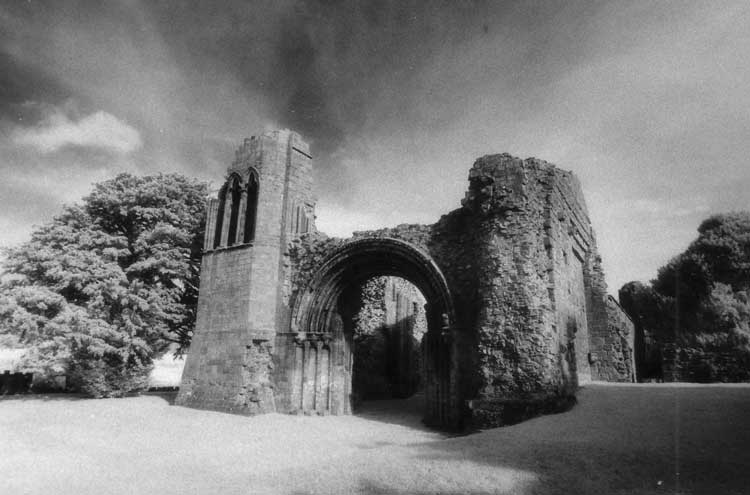
A Landscape Of Lurking Terror
Travel west through the urban spread of industrial Lancashire and move on into the Lake District, and you feel the stresses and strains of the modern world begin to seep away as you find yourself confronted by the awesome splendour of nature.
It is the same in the east of the region where - having journeyed through the tranquil enchantment of Yorkshire - you find your senses assailed by the breathtaking beauty of the untamed Northumberland coast.
Indeed, there is no denying that the North of England comprises an region that revels in a stunning abundance of scenic delights.
In the past, however, this was a wild frontier land that was the lawless domain of savage cattle stealers and ruthless warlords.
In the 8th century, Viking raiders brought terror to the ancient Kingdom of Northumbria, on the North West coast. As they moved inland, and began to settle, they brought with them tales of dragons, ogres, trolls and demon hounds, and supplanted these fearsome creatures into the dark places that Celtic legend had already imbued with an evil reputation.
Their descendants would become the cattle stealers and ferocious warlords who ravaged and pillaged the Scottish borderlands throughout the Middle Ages.
The memories of these unsettled times still linger in the gaunt ruins of the sturdy towers and castles that litter the region, and in the ghosts that may be encountered among them.
For this wild and wind-rattled region, with its abundance of haunted, mystical and mysterious locations, makes a fitting backcloth against which to end a journey around the castles, houses, inns and battlefields of Haunted England.
